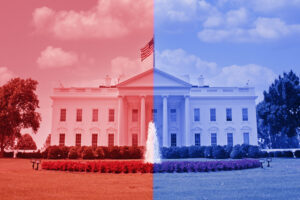While our two-party system of government has never functioned perfectly, in recent years it has become more and more dysfunctional — not only in Washington but in many state houses.
Why?
Have both the Republican and Democratic parties been weakened and crippled by extreme ideological factions in their ranks? Has each party lost its core values and identity?
For more than a decade, we have watched the increasing ineffectiveness of the two-party system play out with the lack of civility, cooperation and compromise.
We see it most prominently in the U.S. Congress. But the same is occurring in many state legislatures where the will of the public on issues — whether about sensible gun control measures, access to health care, immigration reform, increase in the minimum wage and myriad others — has been derailed by special interests and extreme voices.
While both parties from time to time appear to be on life-support after being commandeered and taken hostage by extreme elements, it certainly seems that the Republican Party wounds are deeper.
The impact has been palpable during the last decade with the emergence of the tea party faction and other factions of the Republican Party, which are credited with playing a key role in getting Donald Trump elected president.
The Republican Party has been known as the “Party of Lincoln,” the “Party of Reagan” and, of course, the Grand Old Party (GOP). But the prevailing opinion is it has become the “Party of Trump” that seems to have lost its way, forsaking principles and values that have sustained American traditions and institutions.
That impression is validated with how the Jan. 6 insurrection has been handled by Republicans.
Irrespective of what party you affiliate with, you must be wondering how did we get here.
We gain more clarity when we take time to understand the historical path of both parties and the stereotypes that have defined them, often dictating and determining our reactions and interactions.
If asked, how will you define the Republican Party? The Democratic Party?
With closer scrutiny, we discover that we use labels and stereotypes that put both parties in boxes that are no longer accurate, if they ever were.
For example: To which party would you ascribe such labels as conservative vs. liberal vs. moderate; far-right vs. far-left; rural leaning vs. urban; pro-law enforcement vs. anti-law enforcement; anti-minority rights vs. pro-majority rights; pro-immigration vs. anti-immigration reform?
While some of these labels or political positions may define the core leanings and values of the majority of one party more than the other, isn’t it more realistic that one will find many of these same positions in both parties to some degree?
What are the costs of painting either party blindly with a broad brush, and not appreciating the diverse composition that actually exists?
YOU MAKE OUR WORK POSSIBLE.
At a minimum, such closed-mindedness fosters missed opportunities to find common ground to work together to achieve mutually beneficial outcomes, especially when the issues are tough and the desired paths may seem diametrically opposed.
The question moving forward is: If our two-party system doesn’t continue to work sufficiently, what will replace it?
Historically and periodically, other smaller parties have emerged, like the Libertarian, Green or Constitution parties. There was an attempt to start a new party prior to the last midterm election because of the entrenched and intransigent dysfunction of the two major parties.
When a party loses its identity, the core values and principles that define its purpose and work, who will it appeal to?
Few people expect smooth sailing, or to see the two parties locking arms and singing Kumbaya. But expecting them to work in earnest to govern and conduct the people’s business should be the norm, rather than anxiously awaiting for another disruptive deflection to win the day.
Where does a crisis between the two major parties leave the independents — the unaffiliated citizens — who would like to see a clear path of principles and policies to align with and support?
It is incumbent on all of us, whether affiliated with a party or not, to examine whether we have an accurate understanding of what each party truly stands for and how it operates.
We often go about our daily lives, functioning and making decisions based on impressions and stereotypes of people, places, things, and yes political parties whether they are accurate representations or not.
Do you have an accurate understanding of the Republican Party and the Democratic Party?
What are the associated risks if the two-party system implodes, and radical alternatives emerge?
We can no longer afford to follow or make decisions blindly in this season of partisan intra and inter upheaval and dysfunction. Let us examine the short-term and long-term motives and agendas of each party and the attending consequences.
Only then can we determine what and for whom each party is working and representing, and whether they deserved our support.
GET THE MORNING HEADLINES.
Our stories may be republished online or in print under Creative Commons license CC BY-NC-ND 4.0. We ask that you edit only for style or to shorten, provide proper attribution and link to our website. AP and Getty images may not be republished. Please see our republishing guidelines for use of any other photos and graphics.






Janice Ellis